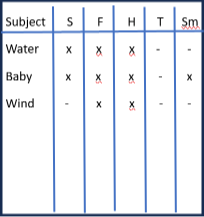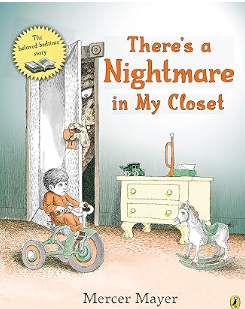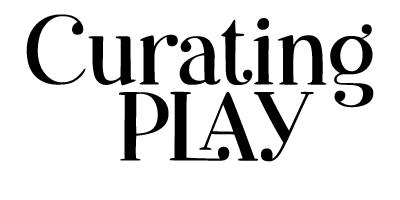Halloween is an exciting time for some programs and children, while others choose to focus on other ideas. I (Sharon) taught kindergarten in a small rural district in Texas many years ago and Halloween was not a part of October activities. However, that didn’t mean that the children in my class were not VERY aware of the Halloween focus from friends in other places, siblings, television, yard decorations and store displays. In order to honor their questions and interest, we focused on imaginary and real life most of the month. We read nonfiction books about things that occurred in their everyday lives…riding to school on the bus, seeing tractors and other farm equipment in the fields around their homes, new babies, pets and things in nature like rain, wind, water and dirt!
Our questions focused on our senses:
- Can we see it? What does it look like?
- Can we feel it? What does it feel like?
- Can we hear it? What does it sound like?
- Can we taste it? What does it taste like?
- Can we smell it? What does it smell like?
Our discoveries were kept on a chart which we used all during the month. Children were welcome to bring in items to investigate as well.

The non-fiction books were then compared to fiction stories with talking animals or silly situations with child characters (the easiest kind of imaginary characters to hear about) and on to storybook monsters as in Harry and the Terrible Whatsit, Where the Wild Things Are or There’s A Nightmare in My Closet. Remember, this was in the early 80’s—long before Monsters, Inc. and the characters of Mike and Sully that so many children happily recognize today! We examined the monsters or not-so-real characters and asked new questions:

- Does this look like any animals I know? Which ones and what characteristics did they have in common?
- Were they the same colors that we see on animals we know?
- What did their faces look like? Happy? Sad? Scary and if so, why?
- What can this creature do? Is it something other animals or people can do?
- Would I like to talk to this creature/character? What would I say?
For this part of our investigation, we made a smaller chart for each book and kept the answers to our questions posted right above each book that sat on the chalk tray of the blackboard (again, 1980’s!!).
I felt like the balance of real and imaginary was helpful as the children were determining their own ideas and feelings about things that they saw during this month. It was also an opportunity for them to understand and articulate their own thoughts about things that could be scary or hard to see. During the imaginary readings, any child was welcome to leave our circle to sit somewhere else or look at other books on their own. I spent time with any child who left our group to make sure that they were comfortable with that separation and sometimes they simply wanted a one-on-one reading of the imaginary story while sitting in my lap!
Along with our real and imaginary discussions, we also looked into particular science topics to cover things that they saw as the season progressed…skeletons, bats and spiders along with fall nature items like apples and pumpkins. There were books, films, songs and fingerplays that accompanied those topics as the children investigated and learned all sorts of facts! We kept a list of all of our learning on a bulletin board with a realistic picture AND an imaginary picture of each item so that they became a part of our real and not real conversation.
Halloween is a personal family decision or a specific center/school decision that can be made. Sometimes a school/center will choose to have a Halloween event and some children will be kept home. Sometimes a child will arrive at school completely decked out head to toe in a costume even though the school/center has decided NOT to have children dress up. Costumes themselves are a whole other issue: Are there limits on the “scare factor” for costumes? Do they wear them all day? Do teachers have to get everyone outfitted for an end-of-day event? What about children who don’t want to be around costumes or families who forget? Does the school plan alternative activities or do the classrooms have extras? (At least a fireman or chef hat can be pulled out of dramatic play to provide a costume if necessary.) Whatever your program chooses to do, communication with families is critical and must be done super early so that there is time for families to either get the costume together or for other plans to be made. Having holiday procedures in the parent handbook is the best policy for clear and timely communication.
There are also other ways to celebrate with costumes that are not Halloween oriented such as individuals from Bible stories, favorite storybook characters or thematic roles such as everyone comes with a box costume or dressed as their favorite food! There are many options for October fun and whatever you choose to do, we hope that it is an enjoyable experience for everyone! We would love to see and post pictures of your activities and events so please send them our way.
Play well…Sharon





